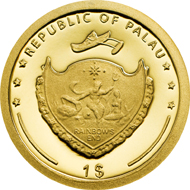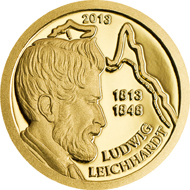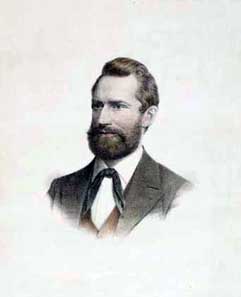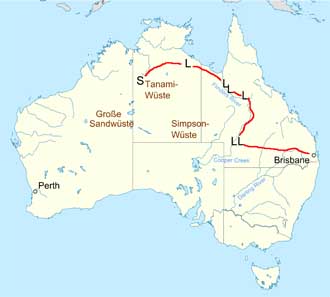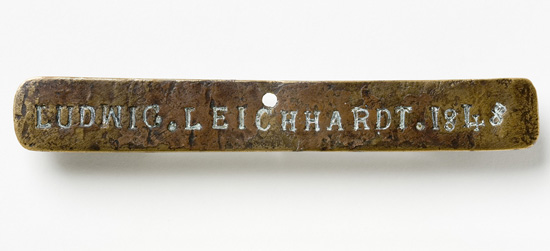August 29, 2013 – While Australians know Ludwig Leichhardt as one of their country’s most important explorers, the native-born German is barely known in his home country. That may change now, at least among coin enthusiasts, thanks to the gold coin designed by Coin Invest Trust.
Palau / 1 dollar / gold .9999 / 0.5g / 11mm / Mintage: 15,000.
The front of the coin features the coat of arms of the Nation of Palau against a polished background, as well as the official name of the issuing country, Republic of Palau and the nominal value, 1 $. The left half of the reverse of the coin depicts the matted profile of the famed explorer, and next to it, his birth year and presumed year of death, 1813 and 1848, respectively. His name: Ludwig Leichhardt, is minted on the lower right side. Above the portrait and along the right edge of the back of the coin, the coastline of north-eastern Australia is indicated, as is the inshore route followed by Leichhardt on his first expedition. The year of issue, 2013, is shown at the upper edge of the field.
Ludwig Leichardt. Source: Wikipedia.
Ludwig Leichhardt was born 200 years ago in Brandenburg, the son of a peat inspector. After secondary school, the gifted young man studied humanities in Berlin before transferring to Göttingen, where he continued to devote himself to scientific studies. It was there that he became friends with the Englishman William Nicholson, and although Leichhardt accompanied Nicholson back to England for a while for further study, he never completed a degree. When Leichhardt failed to comply with his conscription to the Prussian military in 1838, the Nicholson family assisted him in attaining British citizenship. The military deserter first travelled through Europe, but in 1841 decided to leave the Old World and set sail for the British colony of Australia.
In those days, Australia was inhabited primarily along the coasts, and large portions of the interior remained uncharted. After several of Leichhardt’s applications had been rejected, he undertook smaller expeditions through which he familiarized himself with the country. In 1844, he prepared for his first expedition from Sydney. As Leichhardt did not have any money, he relied on donations and procured only the essentials for the journey. The expedition, which consisted of ten men and a host of animals, began on the East coast and then crossed the inhospitable northeast. With Prussian precision, Leichhardt kept a meticulous diary in which he recorded his observations on the flora and fauna, but also his encounters with the indigenous people, the Aborigines. In December 1845, the expedition reached its target destination near the city of Darwin. In 1847, Leichhardt received the Paris Geographical Society’s annual prize for most important geographical discovery, and he was also awarded the funding medal of the Royal Geographic Society. These honours and the financial endowments, in particular, helped Leichhardt plan future endeavours.
Reconstructed itinerary of Leichardt’s last expedition. Source: Fecchi / http://creativecommons.org/licenses/by-sa/3.0/deed.en
As a matter of fact, Leichhardt set out on an even more ambitious and dangerous undertaking – the crossing of the Australian continent from east to west. A new expedition had already begun as early as 1846, but failed after only a few months due to bad weather and illness. Leichhardt remained determined and steadfast in his goal, however, and started another attempt two years later. A small expedition team set out in February 1848 from Port Stephens. In April, the explorer sent one last letter from the final station before setting out into the interior. That was the last anyone ever heard from him. Subsequent search expeditions also failed to clarify what exactly happened to Leichhardt and his team.
Brass nameplate of Ludwig Leichardt 1848, discovered attached to a partly burnt firearm in a bottle tree near Sturt Creek, Western Australia, by an Aboriginal stockman named Jackie. Photo: Dragi Markovic, National Museum of Australia.
In Australia today, many geographical points still bear his name, an enduring reminder to Ludwig Leichhardt the explorer.
More information on this coin is available on the website of Coin Invest Trust.
If you want to learn more about the explorer listen to these audio files of the Ludwig Leichardt Series held at the National Museum of Australia.




